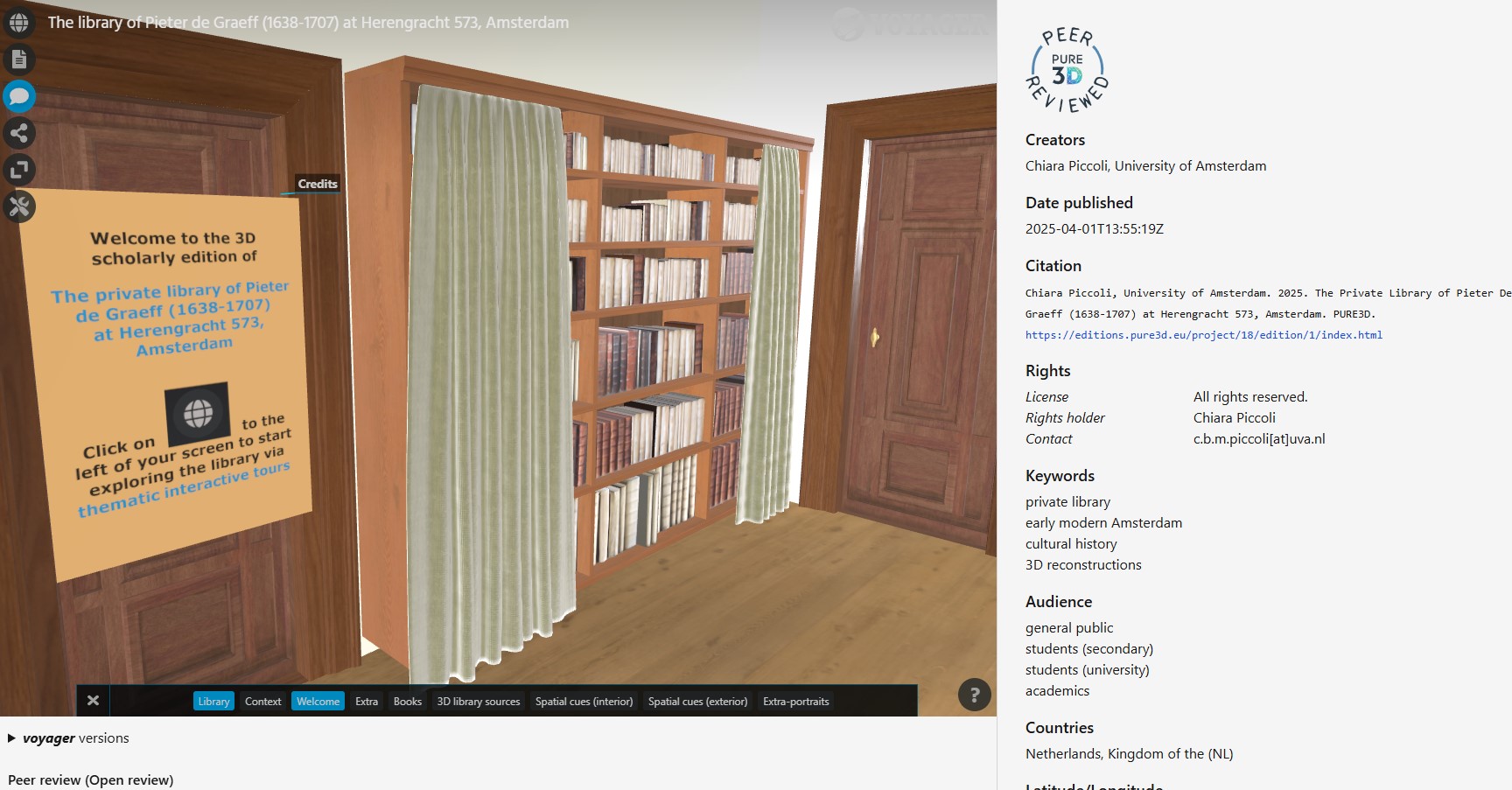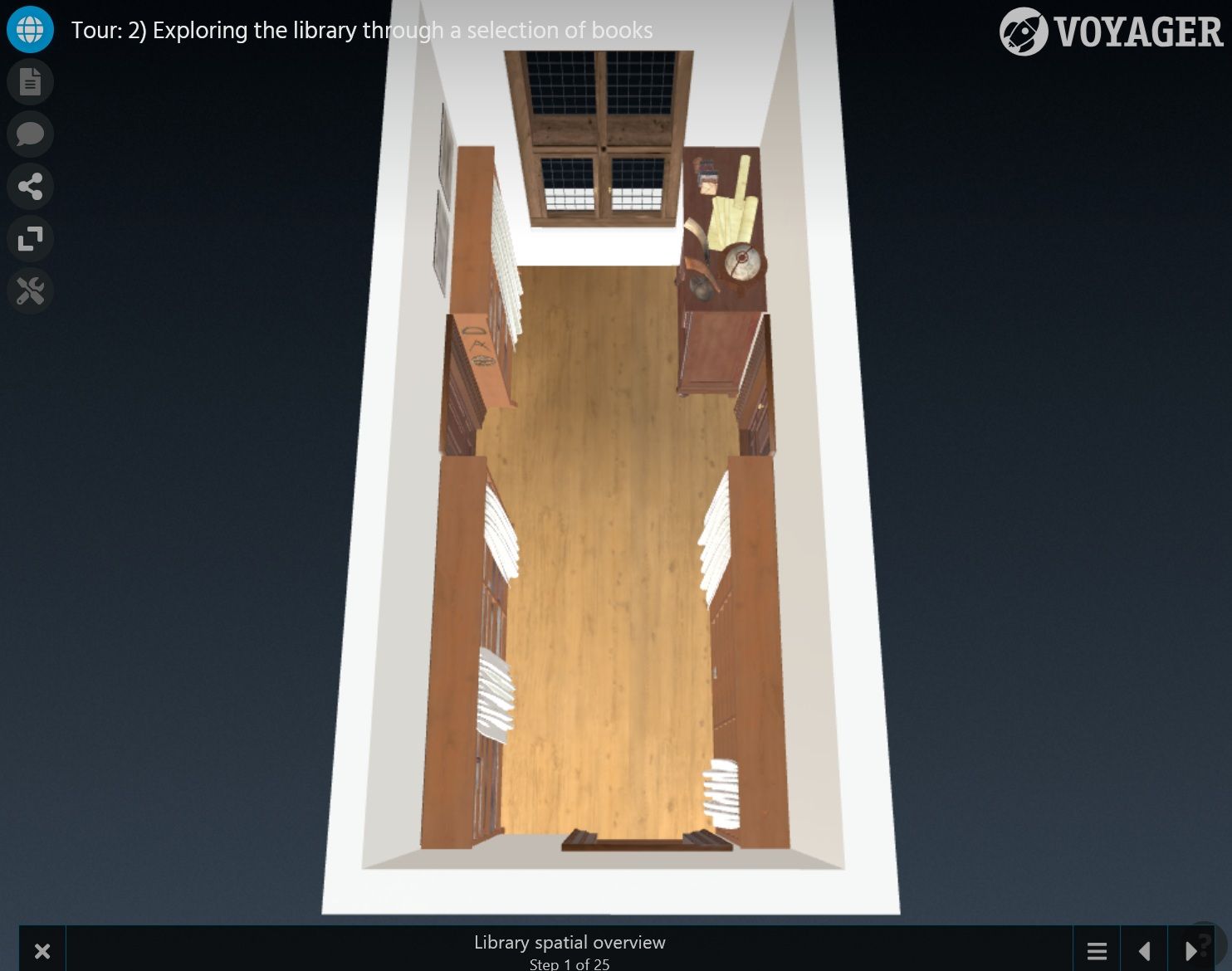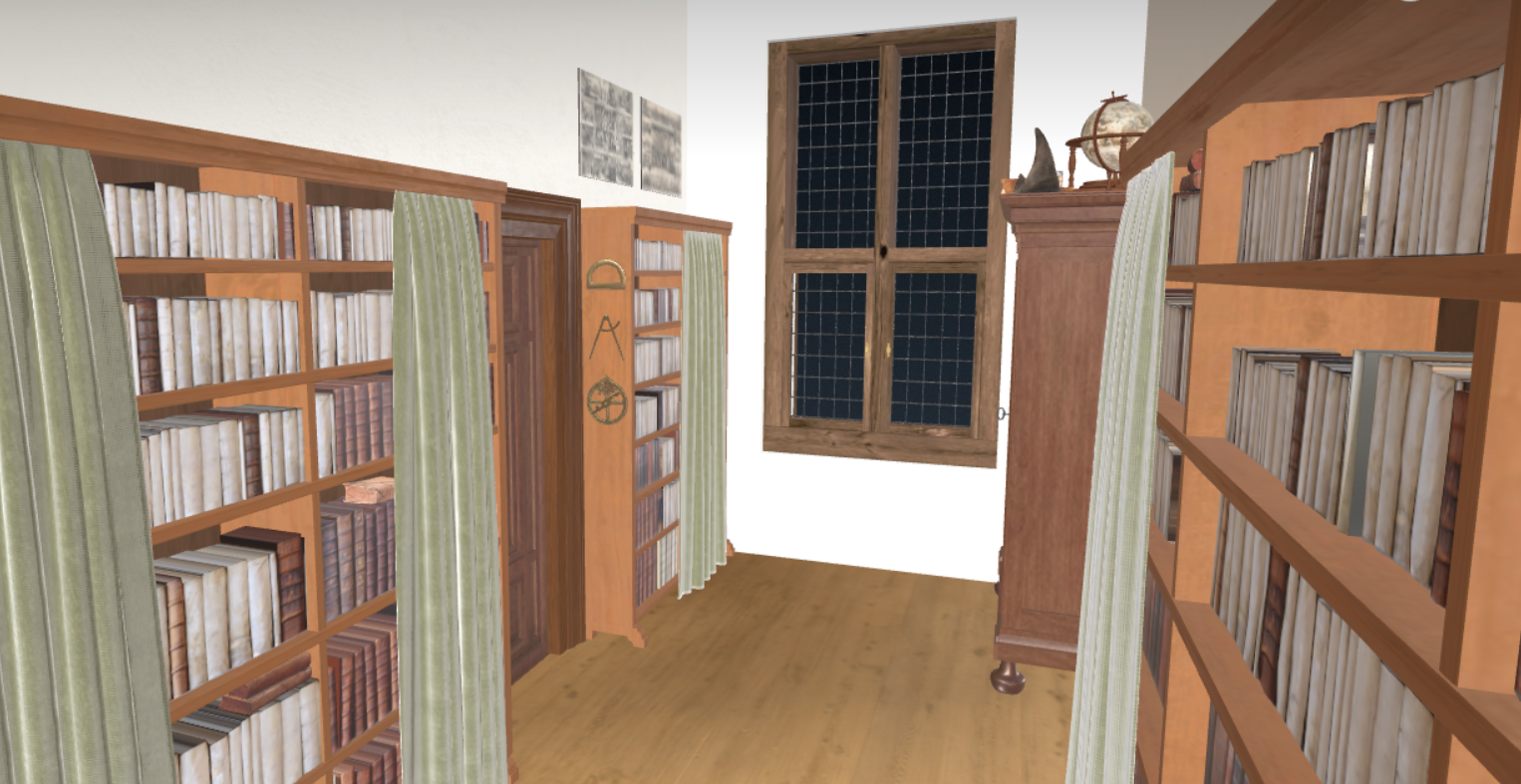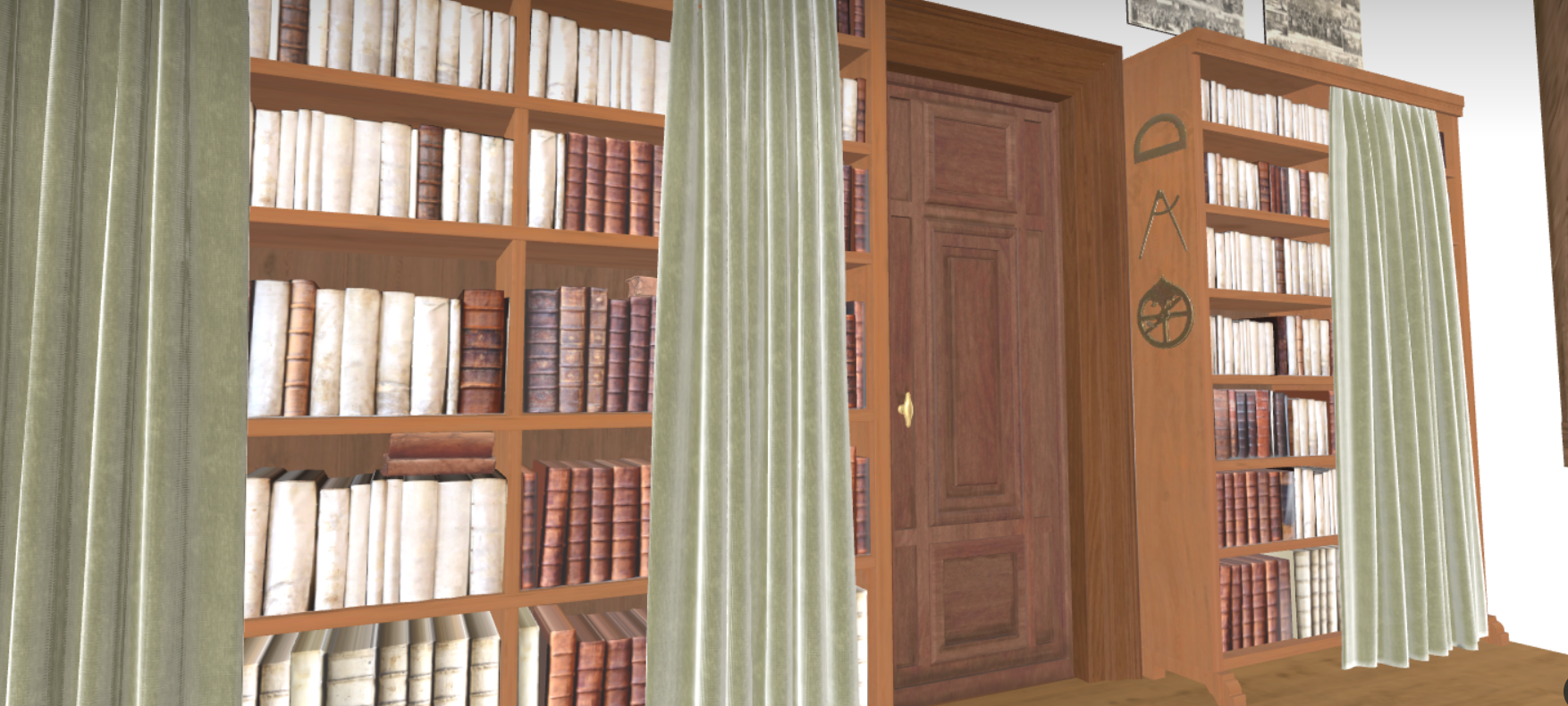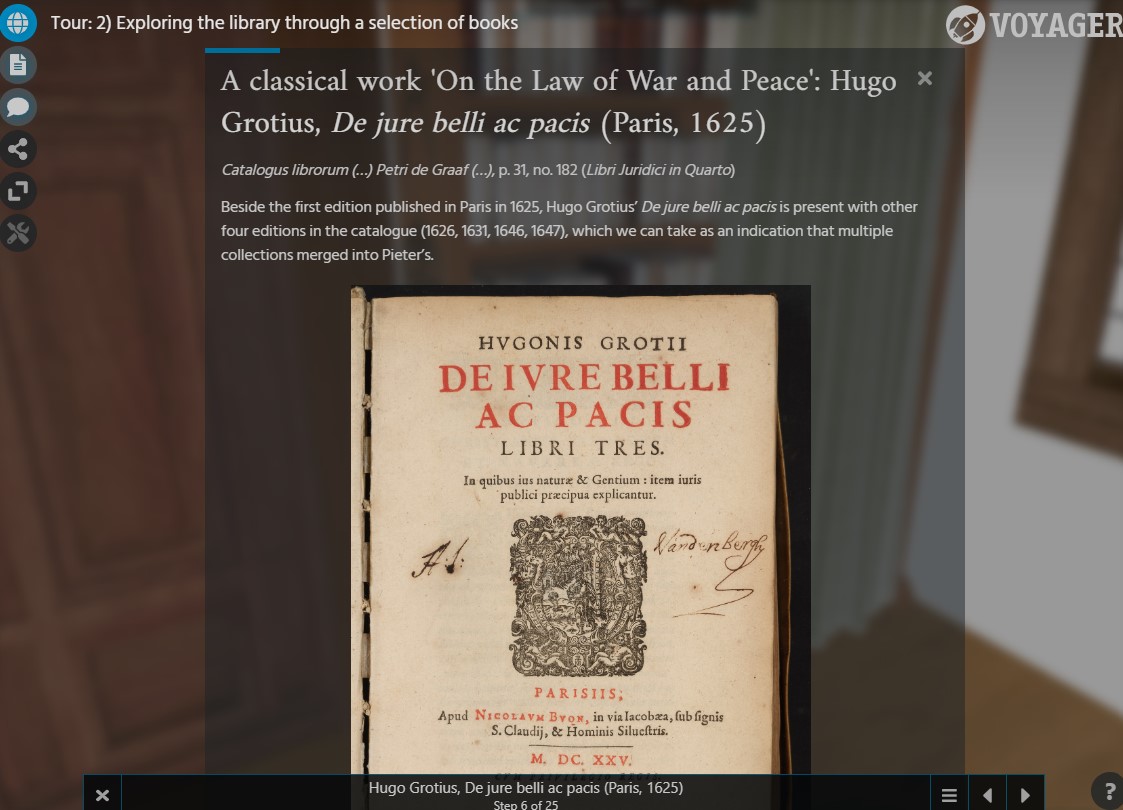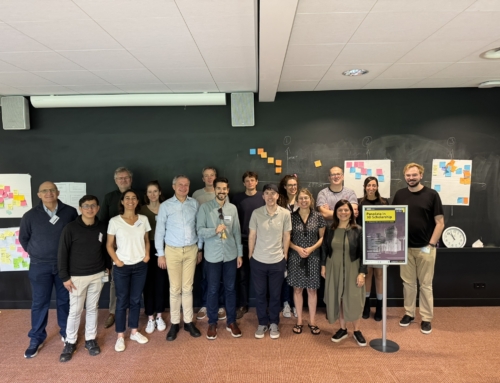Chiara Piccoli has published her open access monograph, 𝗣𝗶𝗲𝘁𝗲𝗿 𝗱𝗲 𝗚𝗿𝗮𝗲𝗳𝗳 (𝟭𝟲𝟯𝟴–𝟭𝟳𝟬𝟳) 𝗮𝗻𝗱 𝗵𝗶𝘀 𝙩𝙧𝙚𝙛𝙛𝙚𝙡𝙮𝙠𝙚 𝙗𝙞𝙗𝙡𝙞𝙤𝙩𝙝𝙚𝙚𝙠 accompanied by an 𝗶𝗻𝘁𝗲𝗿𝗮𝗰𝘁𝗶𝘃𝗲, 𝗮𝗻𝗻𝗼𝘁𝗮𝘁𝗲𝗱 𝟯𝗗 𝗿𝗲𝗰𝗼𝗻𝘀𝘁𝗿𝘂𝗰𝘁𝗶𝗼𝗻 of the library room, published via the PURE3D infrastructure. Chiara’s monograph published by Brill explores the 𝗽𝗿𝗶𝘃𝗮𝘁𝗲 𝗹𝗶𝗯𝗿𝗮𝗿𝘆 of Pieter de Graeff, an influential Amsterdam patrician, whose collection of over 2,300 books was auctioned in 1709. Drawing on unpublished archival sources and De Graeff’s book catalogue, Chiara reconstructed his library both as a book collection and as a physical space – his 𝘣𝘰𝘦𝘬𝘦𝘯 𝘬𝘢𝘮𝘦𝘳 in his home on the Herengracht. While tracing the microhistories of De Graeff’s relatives against the backdrop of the Dutch Republic’s unfolding history, this research reveals his book collection as a 𝗺𝗶𝗰𝗿𝗼𝗰𝗼𝘀𝗺𝗼𝘀 𝗼𝗳 𝗸𝗻𝗼𝘄𝗹𝗲𝗱𝗴𝗲 accumulated through generations. This study reaffirms the enduring power of books – as tangible expressions of knowledge that reveal much about their owners, and as a means of connecting different people, places and historical periods.
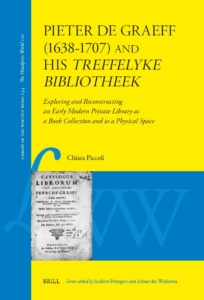
𝗘𝘅𝗽𝗹𝗼𝗿𝗲 𝘁𝗵𝗲 𝗯𝗼𝗼𝗸 (𝗢𝗽𝗲𝗻 𝗔𝗰𝗰𝗲𝘀𝘀): https://lnkd.in/e3YWr5XM and 𝗱𝗶𝘀𝗰𝗼𝘃𝗲𝗿 𝘁𝗵𝗲 𝗮𝗻𝗻𝗼𝘁𝗮𝘁𝗲𝗱 𝟯𝗗 𝗿𝗲𝗰𝗼𝗻𝘀𝘁𝗿𝘂𝗰𝘁𝗶𝗼𝗻 𝗼𝗳 𝘁𝗵𝗲 𝗹𝗶𝗯𝗿𝗮𝗿𝘆: https://lnkd.in/e8GkkH6p


